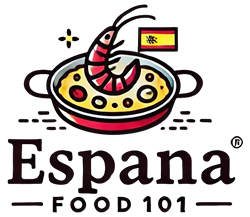When you think about the distinctive flavors of Spain, two dishes likely come to mind: chorizo and paella. Both are beloved staples of Spanish cuisine, known for their rich, bold flavors. A common thread that ties these two iconic dishes together is the use of paprika, or “pimentón” in Spanish. Paprika is the unsung hero of these dishes, delivering a unique smokiness, sweetness, or heat that gives them their unmistakable taste. Today, we’re going to explore how this seemingly simple spice plays a vital role in the flavor profile of Spain’s famous chorizo and paella.
The focus keyphrase for this article is “The Role of Paprika in Flavoring Spain’s Chorizo and Paella”. Throughout the post, you’ll gain a better understanding of how this essential spice transforms the taste of these traditional Spanish dishes. Let’s break down why paprika is more than just a color booster – it’s an integral part of what makes Spanish cuisine so delicious.
What Is Paprika and Why Is It Essential in Spanish Cuisine?
Before we dive deeper into its specific role in chorizo and paella, let’s start by answering the question: What exactly is paprika? Paprika is a ground spice made from dried red peppers, typically from varieties of Capsicum annuum. The peppers can be sweet, spicy, or smoked, depending on the region and type of paprika. In Spain, the most commonly used types are sweet paprika (pimentón dulce), hot paprika (pimentón picante), and smoked paprika (pimentón de la Vera).
In Spanish cooking, paprika adds depth of flavor to a variety of dishes. It’s a versatile spice used in everything from stews and sausages to soups and sauces. In fact, Spanish cuisine without paprika would be like pizza without cheese—it’s that fundamental.
Helpful Hint:
When buying paprika for Spanish recipes, try to source pimentón de la Vera, a high-quality smoked paprika with a protected designation of origin (PDO). It has a distinctive smokiness that’s hard to replicate.
How Does Paprika Influence the Flavor of Spanish Chorizo?
Chorizo is one of Spain’s most famous sausages, and the secret to its deep red color and robust flavor lies in its heavy use of paprika. Traditionally, pimentón de la Vera, a smoky variety of paprika, is the star spice in chorizo, giving the sausage its unique flavor profile. But how exactly does paprika contribute to the magic of Spanish chorizo?
Sweet vs. Spicy: Paprika’s Dual Role in Chorizo
The balance between sweet and spicy is key in crafting the perfect chorizo. While the sweetness of paprika rounds out the sausage’s flavors, the heat from hot paprika gives it a bite that many chorizo lovers crave. Some regions of Spain prefer their chorizo to be mild and rich, while others enjoy a more fiery kick. In both cases, paprika serves as the foundational spice that ties everything together.
The Smoky Factor
What truly sets Spanish chorizo apart from sausages from other countries is the use of smoked paprika. The smokiness infuses the meat during the curing process, giving chorizo that distinct, unforgettable taste. Whether you’re enjoying it sliced on its own or as part of a dish, the subtle smokiness of paprika is always present.
Stats:
According to recent studies, approximately 80% of all chorizo produced in Spain uses smoked paprika as its primary seasoning. This highlights how critical paprika is in defining the flavor of this beloved sausage.
Why Is Paprika So Important in Paella?
Paella is another iconic dish that has become synonymous with Spanish cuisine. Originating from the Valencia region, paella is a rice dish that often includes seafood, chicken, or rabbit. While saffron is traditionally considered the star spice of paella, paprika plays a pivotal supporting role.
The Role of Paprika in Building the Flavor Base
In most paella recipes, the cooking process begins by sautéing onions, garlic, and sometimes peppers in olive oil. This is the stage where paprika is added, allowing its flavors to bloom and infuse the oil. This step is critical in developing the rich, savory taste that will permeate the entire dish. Without paprika, paella can lack the depth and warmth that defines its flavor.
Sweet Paprika for Balance
Unlike chorizo, which may use a blend of sweet and hot paprika, paella primarily relies on sweet paprika for balance. The mild sweetness complements the other spices and ingredients, such as saffron and seafood, without overwhelming them. Sweet paprika acts as a flavor enhancer, bringing out the natural flavors of the rice and proteins while adding a subtle sweetness that rounds out the dish.
Which Type of Paprika Should You Use in Spanish Dishes?
Choosing the right type of paprika can make or break your Spanish dish. While most recipes call for either sweet, hot, or smoked paprika, knowing when to use each one is key to mastering Spanish cooking.
- Sweet Paprika (Pimentón Dulce): Best for paella and dishes that require a milder, more balanced flavor.
- Hot Paprika (Pimentón Picante): Adds heat and spice. Ideal for spicier versions of chorizo or dishes like patatas bravas.
- Smoked Paprika (Pimentón de la Vera): The smoky, bold flavor is a must for authentic chorizo and certain regional stews like fabada asturiana.
Types of Paprika Used in Spanish Cuisine and Their Key Characteristics
| Type of Paprika | Flavor Profile | Common Uses in Spanish Dishes |
|---|---|---|
| Sweet Paprika (Pimentón Dulce) | Mild, slightly sweet | Paella, stews, sauces |
| Hot Paprika (Pimentón Picante) | Spicy, with a moderate heat | Spicy chorizo, patatas bravas, marinades |
| Smoked Paprika (Pimentón de la Vera) | Smoky, earthy | Chorizo, stews, grilled meats |
| Murcian Paprika (Pimentón de Murcia) | Sweet, non-smoked | Vegetable dishes, rice dishes |
Does the Quality of Paprika Matter?
Just like with any spice, the quality of paprika can significantly impact the taste of your dish. Lower-quality paprika might taste dull or lack the depth of flavor found in higher-quality varieties. Spanish paprika, particularly pimentón de la Vera, is known for its superior quality and flavor, thanks to its unique drying process over oak wood fires.
Using cheap or old paprika can result in a flat, less vibrant dish, which is why it’s always worth investing in high-quality paprika for Spanish recipes. The difference is noticeable not just in the color but in the intensity and complexity of the flavor.
How Paprika Adds Depth to Traditional Spanish Dishes Beyond Chorizo and Paella
While chorizo and paella are perhaps the most well-known examples of paprika-infused dishes, Spanish cuisine boasts a wide array of other traditional recipes where paprika plays a starring role. Let’s look at how this spice adds depth and character to a few other beloved Spanish dishes.
Fabada Asturiana
Fabada asturiana is a rich bean stew from the Asturias region, traditionally made with white beans, morcilla (blood sausage), and chorizo. The inclusion of smoked paprika (pimentón de la Vera) gives this dish a deep, earthy flavor that pairs beautifully with the hearty ingredients. Without paprika, fabada would miss that smoky richness that makes it so satisfying on a cold day.
Patatas Bravas
A Spanish tapas favorite, patatas bravas consists of fried potatoes served with a bold, spicy tomato-based sauce. Hot paprika is key to creating the heat in this dish, while sweet paprika balances the sauce’s acidity. The right combination of the two varieties of paprika is what gives patatas bravas its signature bite.
Chilindrón
Chilindrón is a traditional Spanish stew made with lamb or chicken, simmered in a sauce of tomatoes, peppers, garlic, and, of course, paprika. Both sweet and smoked paprika are commonly used in this dish, adding depth and balancing the acidity of the tomatoes. In northern Spain, it’s almost unthinkable to prepare a chilindrón without including a generous amount of pimentón de la Vera.
Helpful Hint:
To get the most flavor out of your paprika, lightly toast it in olive oil before adding it to your dish. This technique helps the spice release its natural oils and aromas, enhancing the overall taste of the food.
What’s the History Behind Paprika in Spain?
Paprika may be an essential part of Spanish cuisine today, but it wasn’t always a native spice. Paprika originally comes from Central America and was brought back to Europe by Spanish explorers in the 16th century. The peppers were first cultivated in Spain in monasteries, and soon after, their ground form became a staple in Spanish kitchens. In particular, the region of La Vera became famous for producing pimentón de la Vera, which is still considered the gold standard for paprika in Spain.
The spice was quickly integrated into traditional dishes, and its popularity grew across the country. By the 18th century, paprika was an indispensable ingredient in many Spanish regional recipes, particularly in sausages like chorizo and in stews. The combination of its vibrant color, smoky aroma, and rich flavor profile made it a perfect fit for Spain’s hearty, flavorful cuisine.
How Paprika Has Shaped Spanish Food Culture
It’s not an exaggeration to say that paprika has helped shape Spanish food culture. Whether it’s adding a touch of sweetness to a paella or giving a smoky punch to a chorizo, paprika’s versatility is unmatched. It’s a spice that goes beyond taste, embedding itself into the very identity of Spanish culinary traditions.
In fact, certain regions of Spain are so proud of their paprika production that they have earned protected designation of origin (PDO) status. The pimentón de la Vera from the La Vera region in Extremadura and pimentón de Murcia are two such examples. These regions have strict guidelines for the cultivation, drying, and grinding processes to ensure that their paprika maintains its high quality and unique characteristics.
What Are the Health Benefits of Paprika?
Aside from its rich flavor and color, paprika also offers several health benefits. This spice is packed with vitamins and antioxidants that can boost overall health. Here are some of the notable benefits of including paprika in your diet:
- Rich in Antioxidants: Paprika contains carotenoids, which are antioxidants that help protect the body from oxidative stress and free radical damage.
- High in Vitamin A: A single tablespoon of paprika provides a significant amount of your daily recommended intake of vitamin A, which supports eye health and immune function.
- Anti-inflammatory Properties: Paprika has compounds that may help reduce inflammation in the body, which is beneficial for conditions like arthritis.
Stats:
Studies show that paprika contains up to 1000 IU of vitamin A per tablespoon, making it a potent source of this essential nutrient. Additionally, the capsaicin in hot paprika has been shown to help with pain relief and weight management.
FAQs
Wrapping Up
Paprika plays a crucial role in shaping the bold, smoky flavors that define iconic Spanish dishes like chorizo and paella. Whether you’re creating a rich sausage or a vibrant rice dish, the type of paprika you use can dramatically influence the taste. Sweet, hot, or smoked, paprika has cemented its place in Spanish cuisine as an essential spice that brings depth, color, and warmth to the table. Next time you reach for paprika in your kitchen, you’ll know just how important it is in creating authentic Spanish flavors.
As you explore different Spanish recipes, remember that choosing the right type of paprika and using it with care can make all the difference. The versatility of this spice means it can enhance more than just traditional Spanish dishes, offering a range of flavors that can elevate any meal. By understanding the role of paprika, you’ll be better equipped to recreate the beloved flavors of Spain right in your own kitchen.







